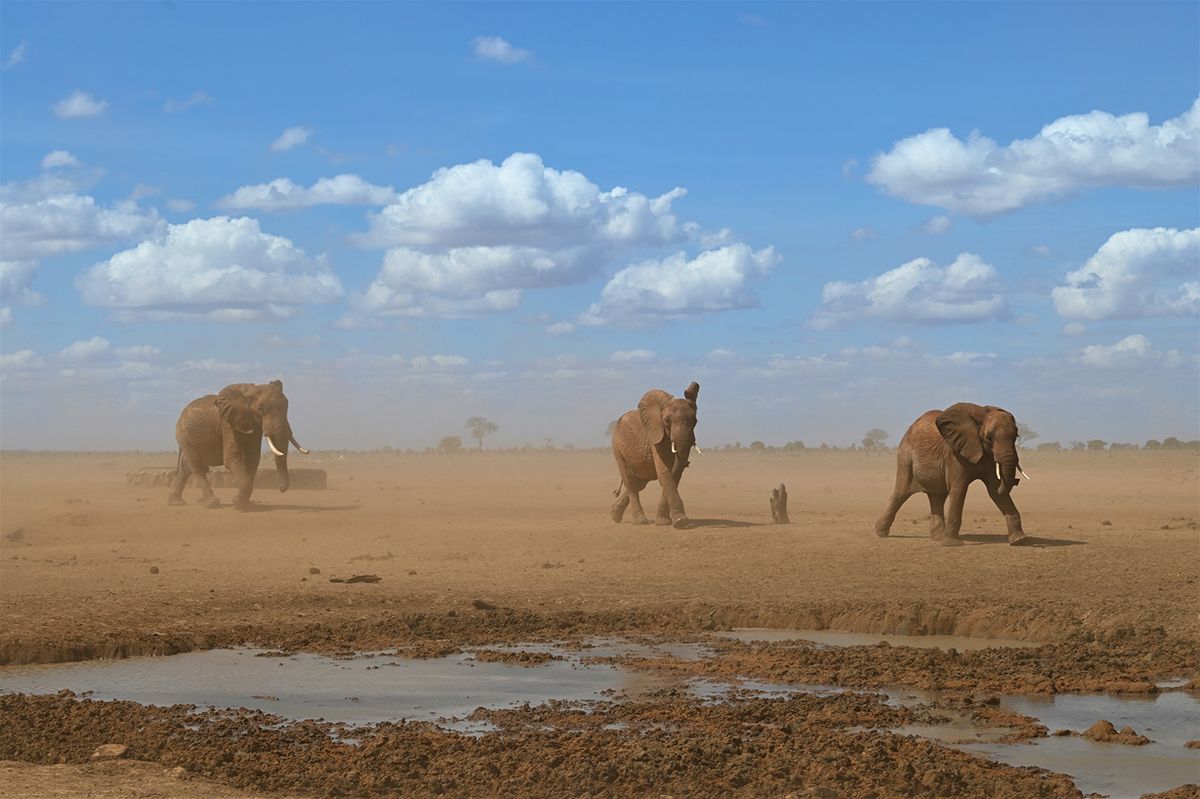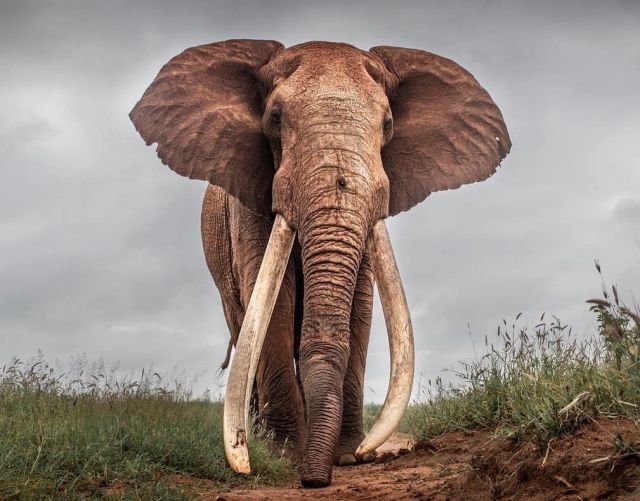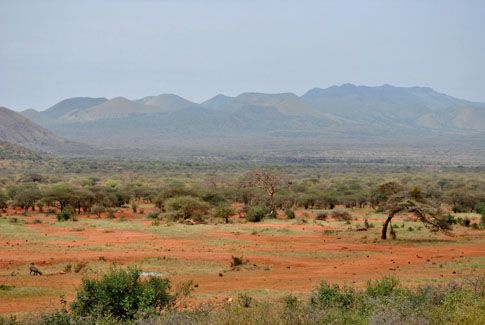
06-07-2022 by Giovanna Grampa

The Tsavo is suffering and animals are struggling like every dry season but, this year, the situation is becoming very critical.
These are difficult days and the harshness of Africa is revealed in its rough and wild beauty as the African wildlife has to earn its keep.
The long-awaited rains of May and June have given themselves away, and gradually everything has become so dry as to take on a painfully desolate appearance.
The landscape has not lost its magnificence, however, it has taken on a new dimension, lashed by gusts of wind that exceed even 50 kilometers per hour and raise clouds of red dust everywhere.
It is a somewhat rough caress that never ceases and smells of the desert.
Weakened animals wander wearily in search of food.
Not a blade of grass is left in the ground, which from its beautiful reddish brown color has turned into a sand-colored, soulless expanse.
The real problem is not water, as generally in a drought one might think: the puddles fed by the wind turbines have been augmented with solar panels that ensure the supply of water and the filling of the concrete ponds, built in non-critical times, precisely with the park's dark periods in mind.
Out of nowhere, like ghosts, rocking at a slowed pace like sleepwalkers, the elephants approach the pools to drink: they quench their thirst, bicker a little among themselves over respect for hierarchies to quench their thirst, get dusty, and as they have arrived they leave, into nowhere, to unknown destinations in the brushwood, in an increasingly difficult search for food. Few green areas remain where giraffes, elephants, zebras and herbivores in general can still feed, and where lions, cheetahs and a few leopards roam around waiting for easy feasts, only to relax later in somnolent inactivity.
The remaining trees are increasingly flayed bare by elderly, territorial, wrinkled-skinned elephants with powerful tusks and vigorous trunks, perfect for snatching up anything they can carry to their mouths. Herds of zebras search among the earth for those few remaining dry stalks of grass, woozy from the wind, easy prey for felines who are also always hungry, while herds of buffalo move slowly along the plains raising thin clouds of dust. The constant need to feed also requires constant movement, and many animals have left, and are leaving, the park in search of healthier food, and it is not uncommon to see elephant passages on the Tsavo Road even 40 km from Sala Gate. The heavy rains that have fallen on the coast have made the land fertile with a myriad of crops but, unfortunately, they have stopped halfway between the coast and the park boundary. Driving along the Tsavo road the degradation from bright greens to dull grays of the endlessly declining dry grass is a sight that hurts your heart. Many elephants have reached these fertile lands, full of lush plantations, and hungry they have eaten everything in their path, even pushing as far as Ganze, a village near Kilifi. Farmers called in the Kenya Wildlife Service (KWS) to get a hundred or so joyfully well-fed pachyderms away from their crops, and with the help of a helicopter they were driven to the park. But how long can these well-fed elephants stay in the Tsavo in search of new, hard-to-find food? The village-animal conflict has flared up again, and nothing will stop their extraordinary need for nutritious food: they will move on, look for more crops, and, in the best case scenario, be driven away again.
But then is there no hope and what solutions to adopt? In this situation the only hope lies in the advent of rain. Too little but damn realistic because there is a lack of projects and will to find solutions upstream and not in the during: we are talking about reforestation, irrigation of areas near the river to create green and palatable meadows for herbivores, helping the animals by bringing fresh food inside the park to be left near the waterholes. Projects that have been discussed for some time and that environmental volunteers could implement while also bearing the associated costs to turn a nightmare into a dream. But everything has to be coordinated with the responsible bodies and to date people prefer to be fatalistic and wait in watchful anticipation for the rains to come.
In the meantime, Tsavo is preparing to receive tourists with road improvement works, widening and cleaning of the existing rain puddles now reduced to dry mud traversed by cracks forming an irregular grid. A good number of machines and trucks roam around the park raising more dust, scaring away animals that little appreciate the disturbance of their quiet and creating some discomfort for tourists who are visiting the park at this time. Doubts remain that these works are normally carried out just when the rainy season is behind us: if so, very hard times would be expected for the poor animals while even the weather forecast, for now, gives no hope of rain.
NEWS
by redazione

Progress for the tarmac of the road that leads to the entrance hall from Malindi Gate of Tsavo East National Park.
After the stretch from Malindi to the village of Ganda they have been leveled and are now in very good...
ITALY
by redazione

The Friends of Tsavo back in Italian schools to raise awareness among young people about the protection of the animals of the African reserves and to promote the good side of the Black Continent, the least publicized by the media...
WILDLIFE
by Leni Frau

He was one of Tsavo's "Super Tuskers." Lugard, an iconic elephant with huge tusks and regal bearing, also...
ENVIRONMENT
by redazione

The efforts made so far to ensure water to Tsavo National Park and its ecosystem may not be enough.
The closest savannah to the Kenya coast threatens to extinction in 15 years unless seriously created irrigation systems and new dams.
NEWS
by redazione

The sadness is deep for fans of the savannah that after so many safari, had learned to recognize it.
Satao II, one of the few remaining elephants by the giant tusks in Kenya, the "big tuskers" (estimated there would be no...
NEWS
by redazione

The food emergency in the hinterland of Malindi and Kilifi (as well as in the whole of Kenya) that puts the...